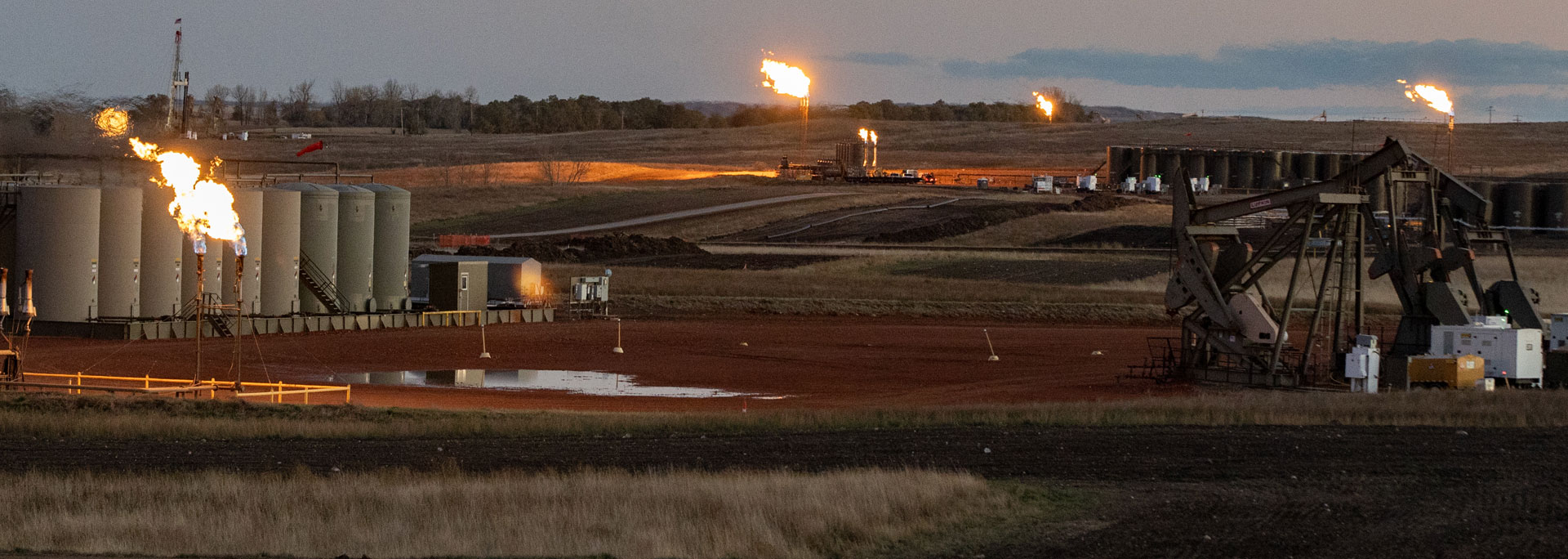Every year, U.S. oil and gas companies set fire to billions of cubic feet of natural gas and directly release an additional unknown amount of the methane-rich gas into the atmosphere. But regulators are in the dark when it comes to how much greenhouse gases are being released through these processes, known as flaring and venting. That’s the main finding of a new investigation by the Howard Center for Investigative Journalism at the Walter Cronkite School of Journalism and Mass Communication.
Climate scientists have warned that without steep, immediate reductions in emissions of carbon dioxide and methane, the world will miss its chance to avert the deadliest and most destructive effects of climate change, which is already contributing to unprecedented wildfires, floods and other natural disasters across the planet. Epidemiologists have also linked flaring emissions to preterm births.
The Howard Center’s monthslong investigation, Gaslit, was based on an analysis of satellite data of oil and gas operations in the 13 states designated by the U.S. Energy Department as having significant ongoing or potentially increasing flaring activity. Reporters compared those volumes to the data that states require companies to report and found vast discrepancies in the totals from 2012-2020.
“You can’t regulate what you don’t measure,” said Gunnar Schade, an atmospheric scientist at Texas A&M University who has used satellite data to study flaring in Texas. “We actually don’t have a good handle on what goes in the atmosphere for various reasons — some of them by design, some of them by negligence.”
The Howard Center found that over much of the last decade, oil and gas operators in Texas and a dozen other U.S. states have flared, or burned off, at least 3.5 trillion cubic feet of natural gas. That’s the greenhouse gas emissions equivalent of nearly 42 million cars driving for a year, or more than $10.6 billion in revenue based on the market value of natural gas during the study time period.
Flaring occurs mostly at oil wells, but even companies that primarily produce and sell natural gas burn off some of it. Companies argue that they flare and vent for safety and maintenance and because selling or reusing the gas is not financially feasible. The industry and its regulators even refer to this gas as “waste.” But experts say a valuable resource is being squandered because of weak regulations, ineffective tracking of flaring and venting, and a lack of economic incentives to capture and sell the gas.
“The atmosphere is a free dumping place,” said Robert L. Kleinberg, senior research scholar at the Center on Global Energy Policy at Columbia University. “It’s like throwing garbage out the window back in the Middle Ages.”
Regardless of the reasons, every act of flaring and venting releases methane, which traps heat 80 times more effectively than carbon dioxide over a 20-year period, making methane reduction one of the fastest routes to reducing global warming, experts told the Howard Center reporters.
“One of the big moments during our reporting was finding that even though in 2004 the U.S. Government Accountability Office recommended a uniform method for tracking flaring across all states, there is still no standardized reporting system,” said Maya Leachman, who recently graduated from Arizona State University with a master’s degree in investigative journalism. “Being able to spend months giving this project the time it deserved helped us truly understand the impact flaring has on the environment and the communities who live with it.”
Students consulted leading scientists who pioneered and worked with the satellite data in crafting their methodology for analysis. They also spoke with regulators, operators and environmentalists to understand the challenges and consequences of flaring and venting.
“The reporters found, wrangled and standardized data across states, sometimes dealing with millions of individual reports, to allow this first-ever comparison of observed and reported flaring volumes in the U.S.,” said Sarah Cohen, who holds the Knight chair in data journalism at Cronkite and supervised the data analysis. “Their work — fully documented and made public on the code sharing site Github — is a model for projects like this in the future.”
The multimedia investigation, which also includes an interactive map, short documentary and audio, was overseen by Maud Beelman, the Howard Center’s executive editor, and Lauren Mucciolo, its executive producer.
The Howard Center at Cronkite and another at the University of Maryland were established in 2019 under grants from the Scripps Howard Foundation to advance deeply researched watchdog journalism and train the next generation of investigative reporters. The centers honor the legacy of Roy W. Howard, former chairman of the Scripps-Howard newspaper chain and a pioneering news reporter.
For more information on the Cronkite School’s Howard Center and its projects, email howardcenter@asu.edu.
